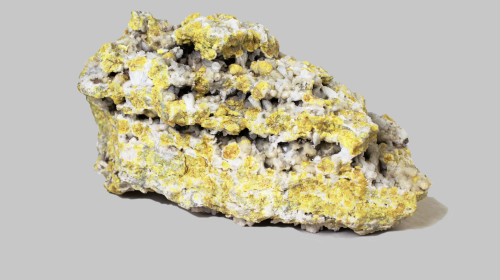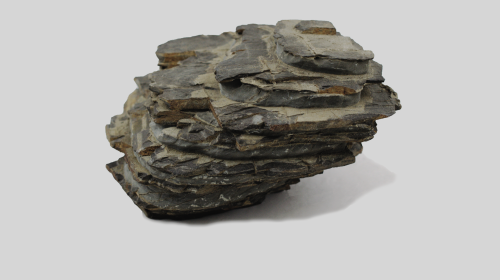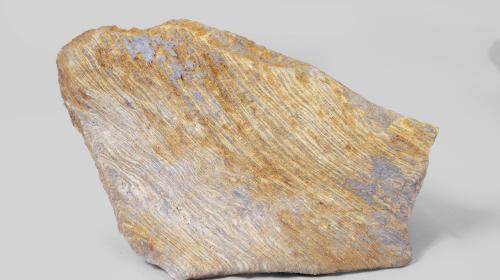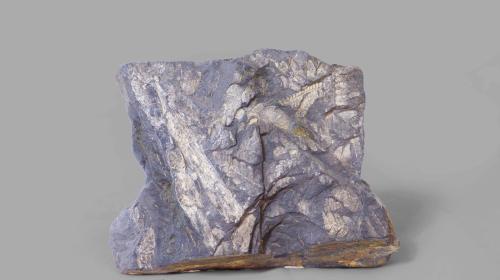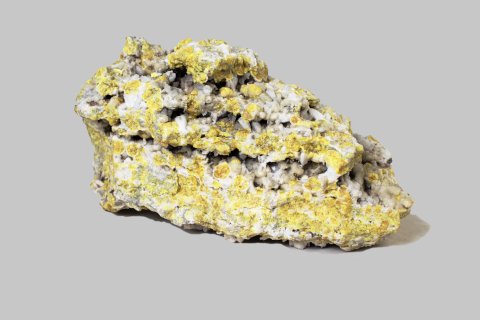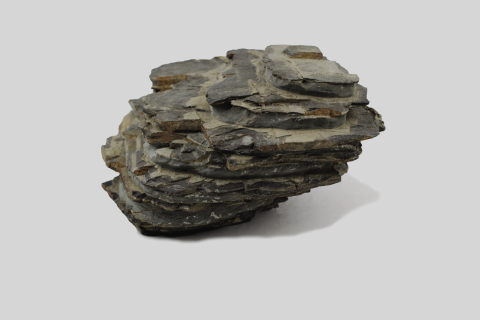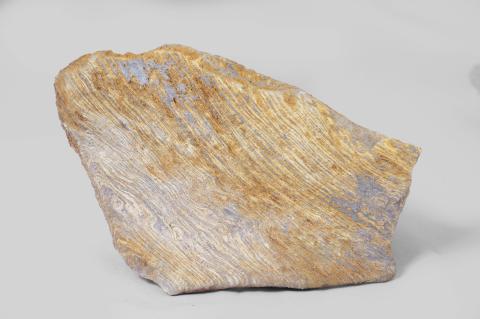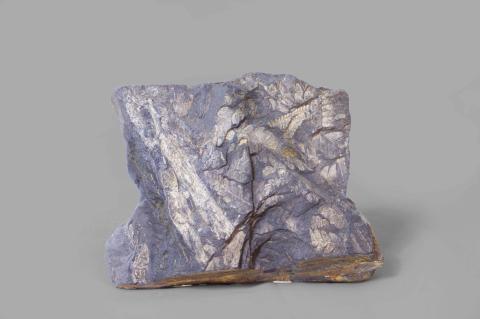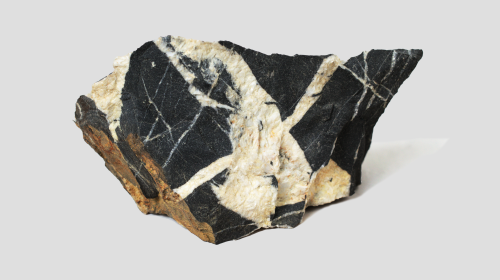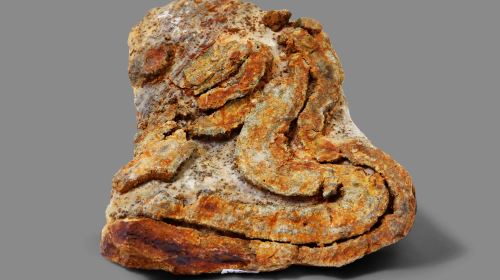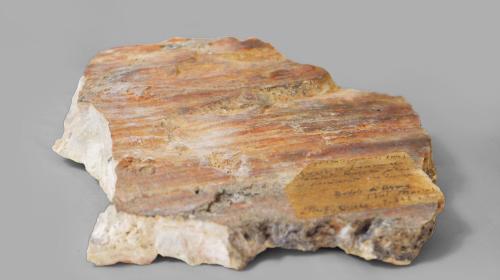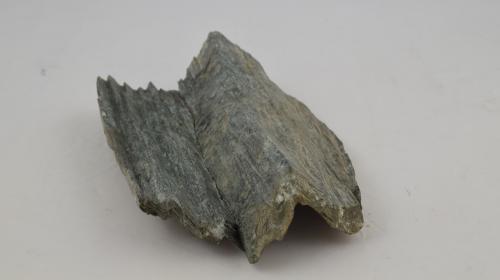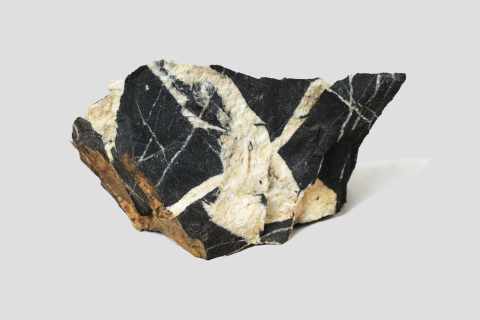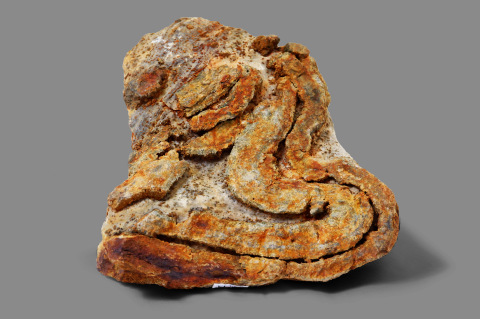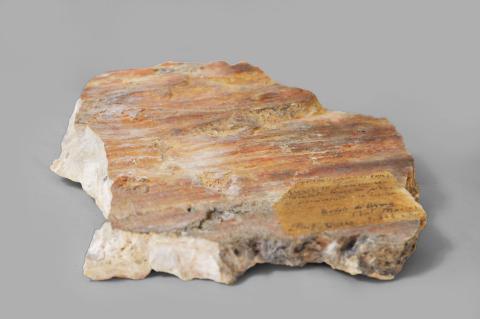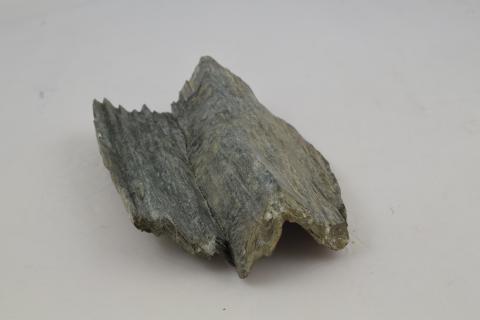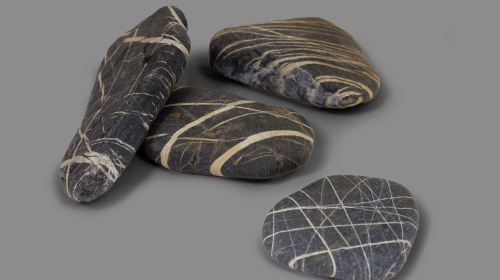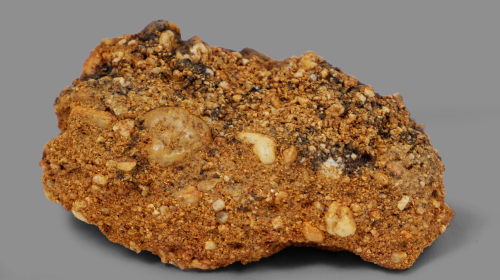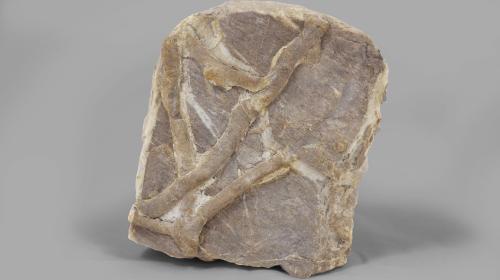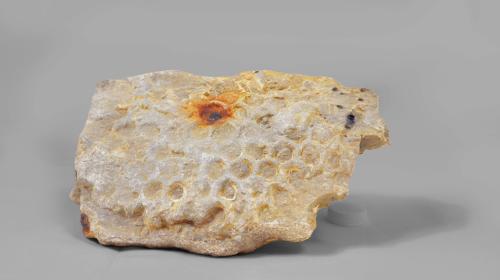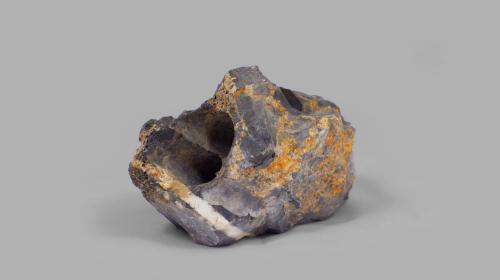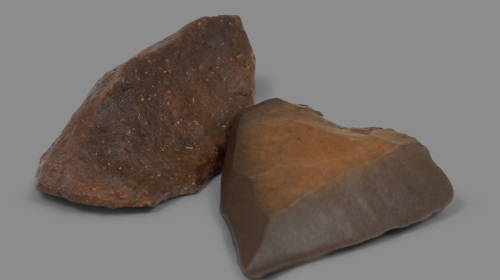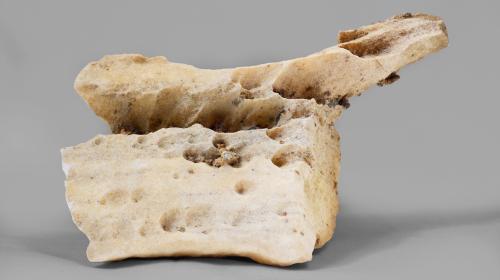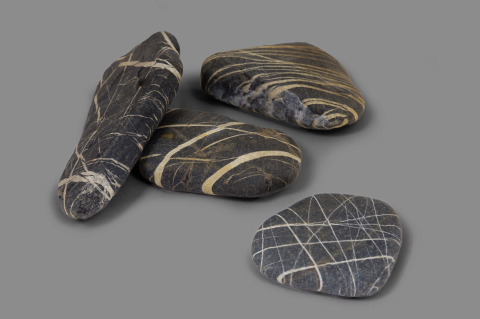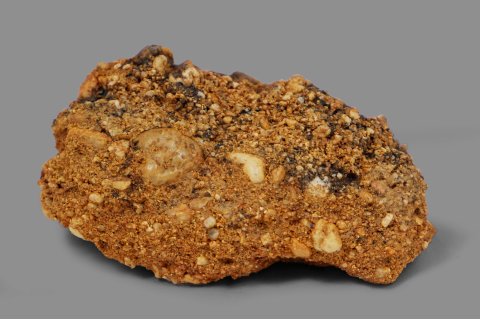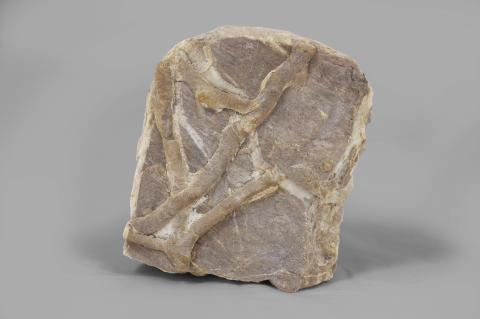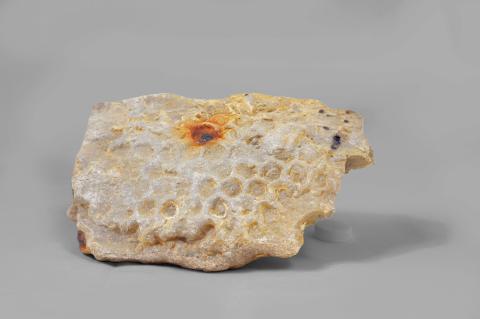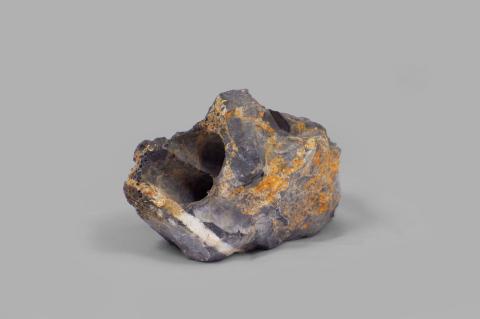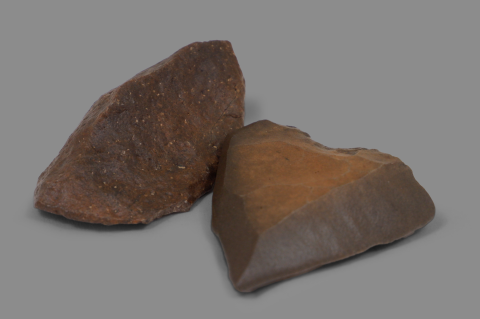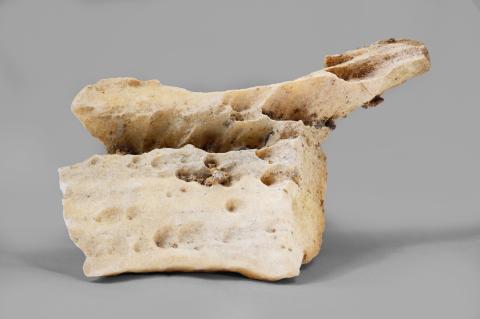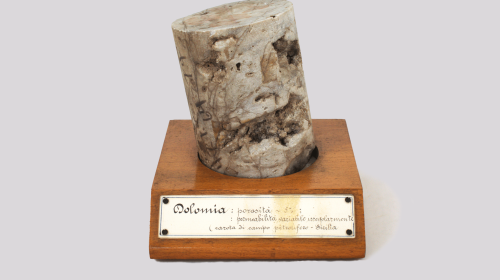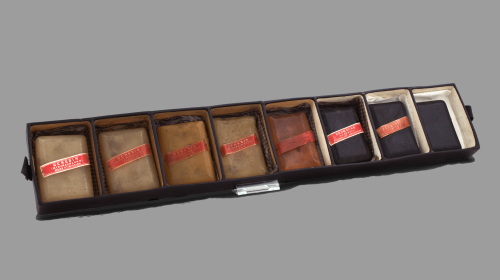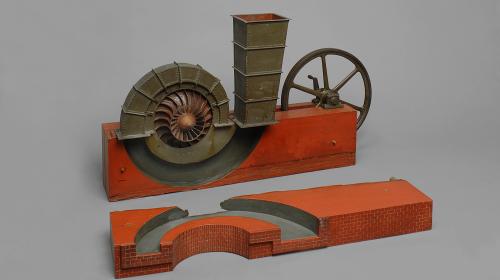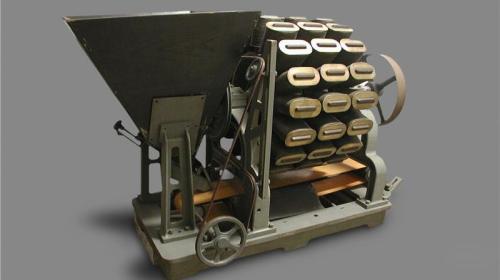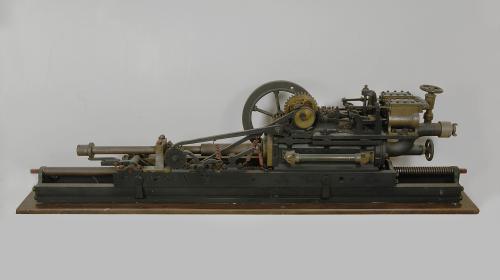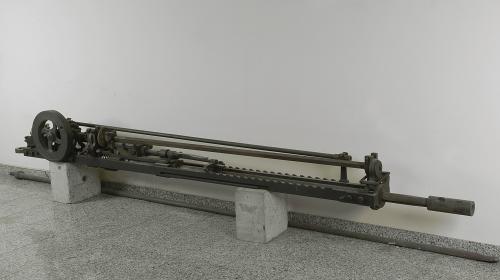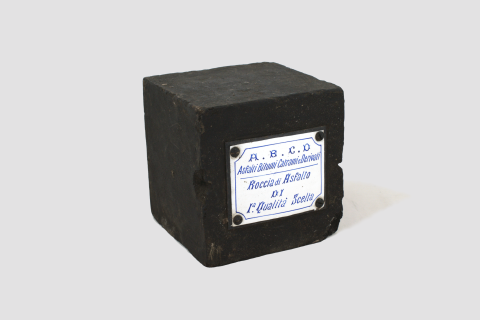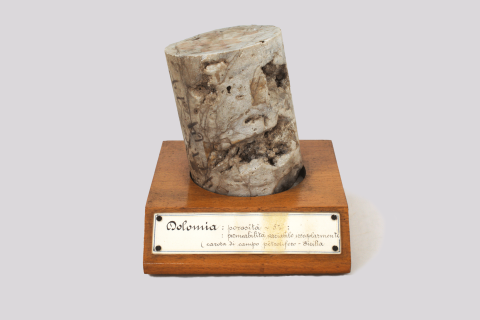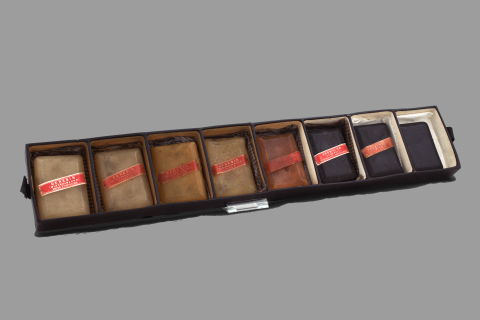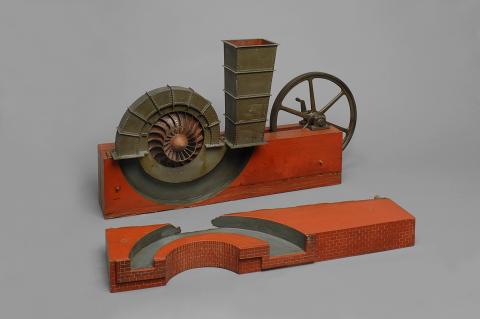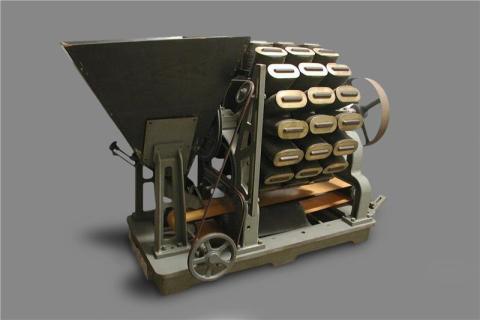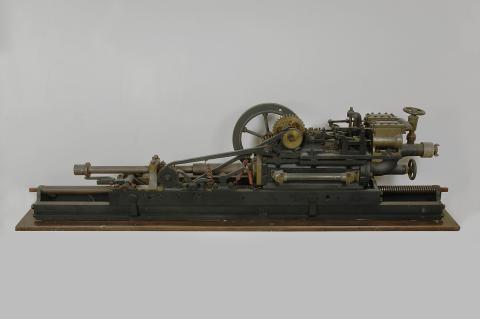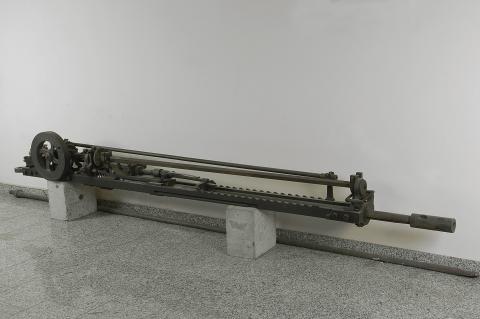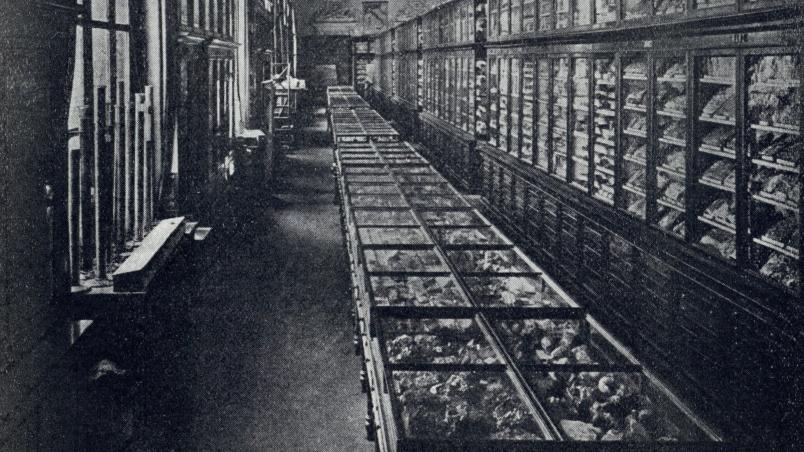
The collection, created in the first decade of the 19th century, originates from the combination of a “statistical collection” of minerals and rocks from various provinces of the Kingdom of Sardinia belonging to the Azienda Generale Economica dell'Interno (1816) and a “methodical collection” of minerals and rocks belonging to the Ecole des Mines di Moutiers in Savoy.
In 1853, when the Azienda Generale Economica dell'Interno closed, the full collection, counting almost seven thousand units, was handed over to the Regio Istituto Tecnico di Torino (1845), where Quintino Sella (1827-1884), a professor at the school, rearranged it for public display. Quintino Sella successfully catalogued and enriched the collection of the Museum of the Institute (of which he became director in 1856), and donated his personal mineralogical collection, increasing the number of units up to eighteen thousand.
In the late 1850s the premises of the Royal Technical Institute became insufficient to accommodate the entire geo-mineralogical collection, which, thanks to the personal interest of Quintino Sella, was moved to the Valentino Castle.
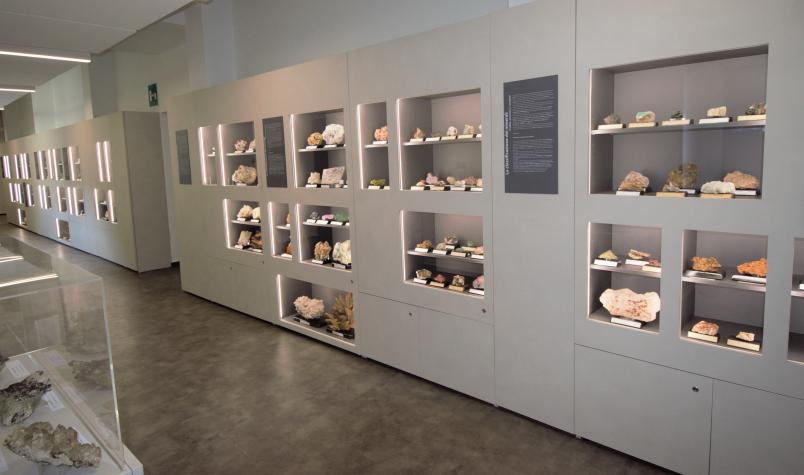
Mineralogy is the science that identifies, studies, describes and categorises minerals, examining their methods of formation and the disposition conditions. Mineralogy can be divided into general mineralogy, studying the chemical, crystal chemical, physical, optical, morphological and structural properties of minerals, and descriptive mineralogy deals with the classification of minerals, which mineralogy deals with the classification of minerals.
In the GeMM exhibition it is possible to admire a considerable selection of the historical mining heritage of the Department, counting approximately 450 samples displayed according to their mineral classification.
The materials of important historical-scientific value, coming from all over the world, represent the fruit of the scientific research of eminent personalities who have marked the history of Politecnico di Torino.
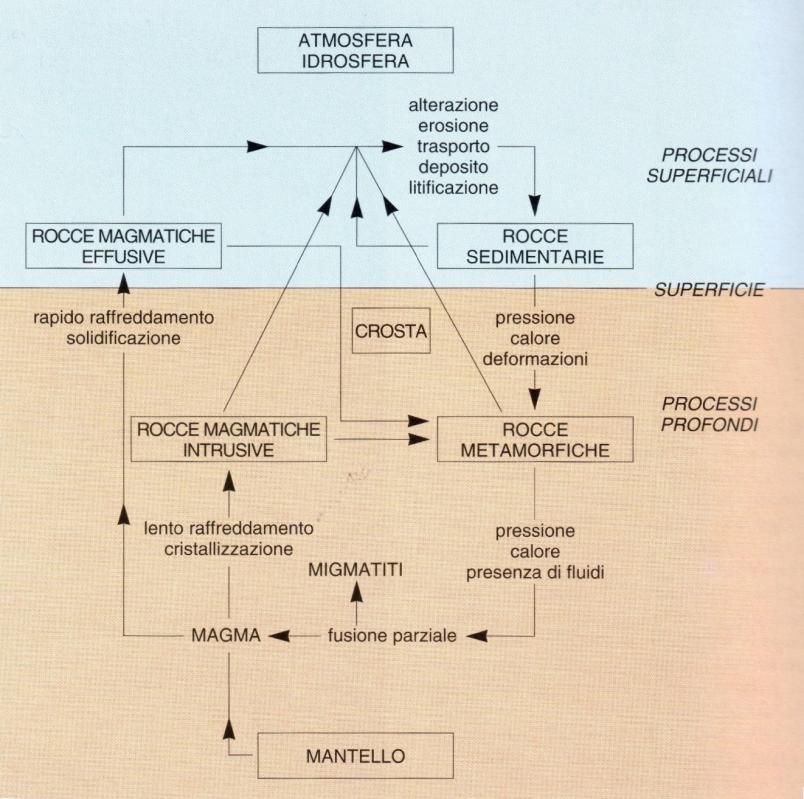
Petrography is the science that describes the microscopic and macroscopic characteristics of rocks and their chemical and mineralogical compound.
Petrography aims to categorise rocks through various study methodologies: chemical analysis (qualitative and quantitative analysis to find out rocks’ composition), mineralogical analysis (allowing the identification of minerals which make up the lithotype) and structural analysis (identifying the distribution, arrangement, shape and size of various minerals).
The lithogenic cycle (also known as rock cycle) is a schematic model which describes the processes and genetic relationships rocks have with each other and with magma, in the framework of the Earth’s crust.
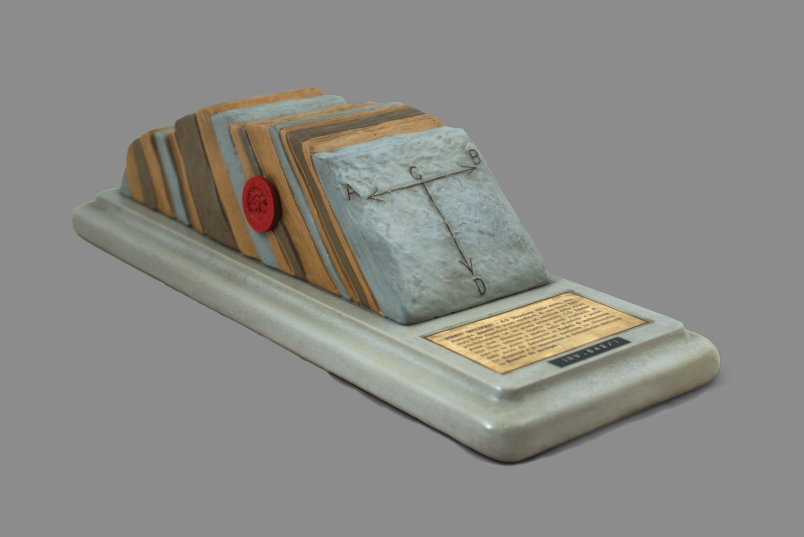
Stratigraphy is the branch of geology that studies the characteristics of various sedimentary formations, the arrangement and geometry of rock layers and their temporal progression. It is based on the examination of physical characteristics of rocks and fossils within them.
Stratigraphy allows the discovery of climate changes that occurred over time, the evolution of various natural environments and the changes which have taken place over the eras regarding the geography of seas and lands and the alterations of the morphology of the Earth's surface.
Stratigraphic studies are the basis of historical geology, a branch of Earth science dealing with the reconstruction of events (physical, chemical, biochemical and biological) which occurred on Earth during various geological periods.
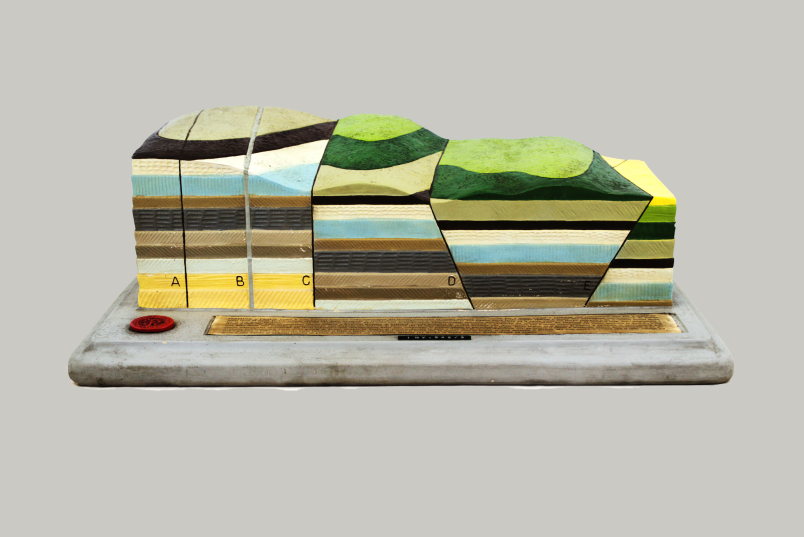
Tectonics is the branch of geology that deals with the mutual connections of rocks that make up the lithosphere. In particular, this branch examines the dislocations and deformations of the Earth’s crust, as well as the effects that can be observed at every dimensional scale, from a microscopic to a continental scale (faults, folds, tectonic discordance, diapirism, etc.).
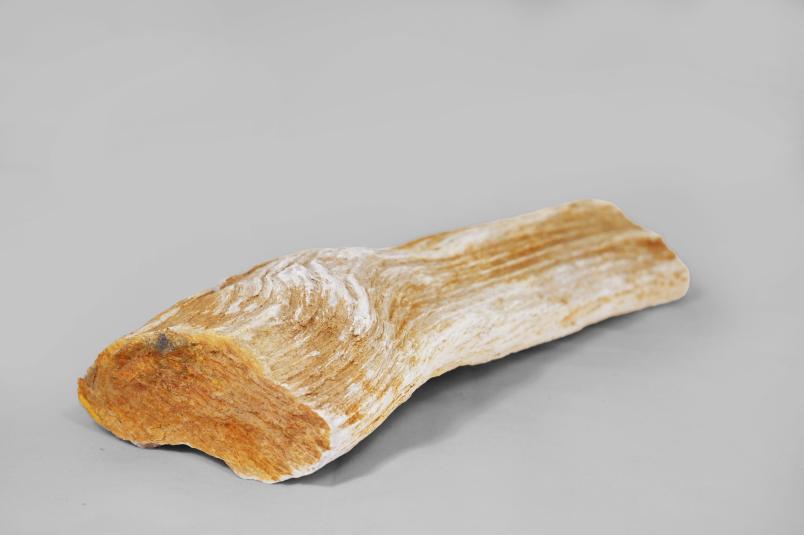
The concept of a geological phenomenon, “abstract” in itself, is related to the type of observation with which a geological object is examined. A geological phenomenon is the result of a precise process (physical, chemical, biological, climatic-environmental) that leads or does not lead to the formation of a rock, not the rock itself.
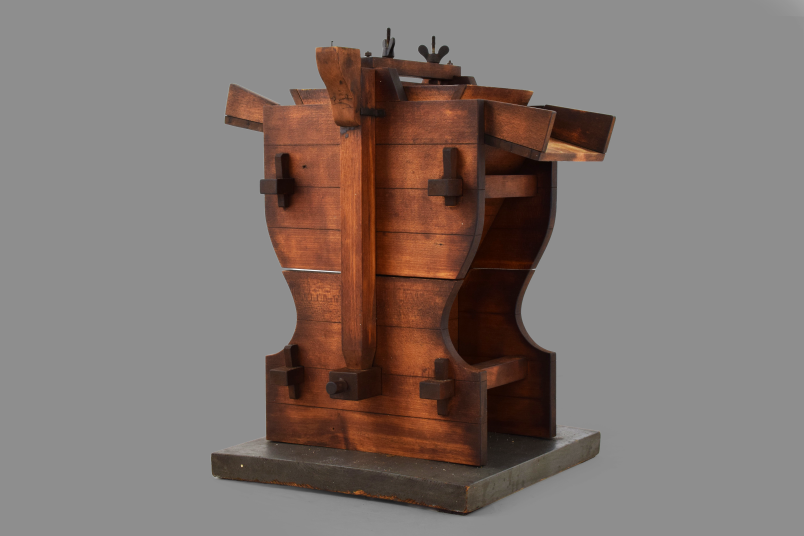
The history of Mining engineering at Politecnico di Torino begins in the second half of the 19th century with the establishment of Scuola di Applicazione per gli Ingegneri. Quintino Sella was a pioneer in this field and a brilliant mining expert, in addition to his scientific merits as mineralogist and crystallographer. As a mining expert, Sella invented the magnetic “elettrocernitrice”, the first machine in the world used to separate iron ore. It was patented in 1855, awarded a gold medal during the London International Exposition in 1862 and it was employed to separate magnetite from other minerals in the Traversella mine.
A few models of mining equipment, including a underground mining scale models and mineral processing machines, the first and secondo model of Sommeiller's drilling rig make up the scientific and historical heritage of mining engineering.
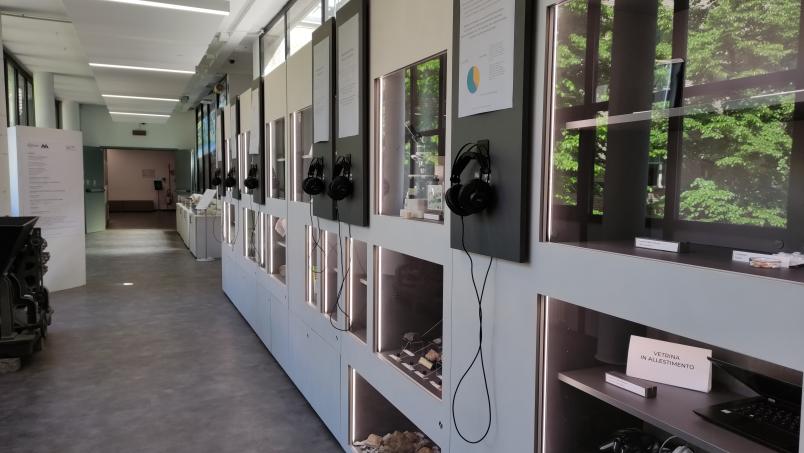
The exhibition starts and ends with a multimedia section that, on one hand, presents visitors with a reflection on the scientific and technological research of DIATI, and on the other, introduces and concludes the museum route.
In the initial part, four of the five main research macro-topics of the Department of Excellence are discussed. The fifth macro-topic, more specifically related to the themes of the Museum, is presented in the final part through a reflection on the role of raw materials, particularly those defined as "critical," in everyday life and in the current geopolitical context.
Section curated by Vincenzo Guarnieri.
